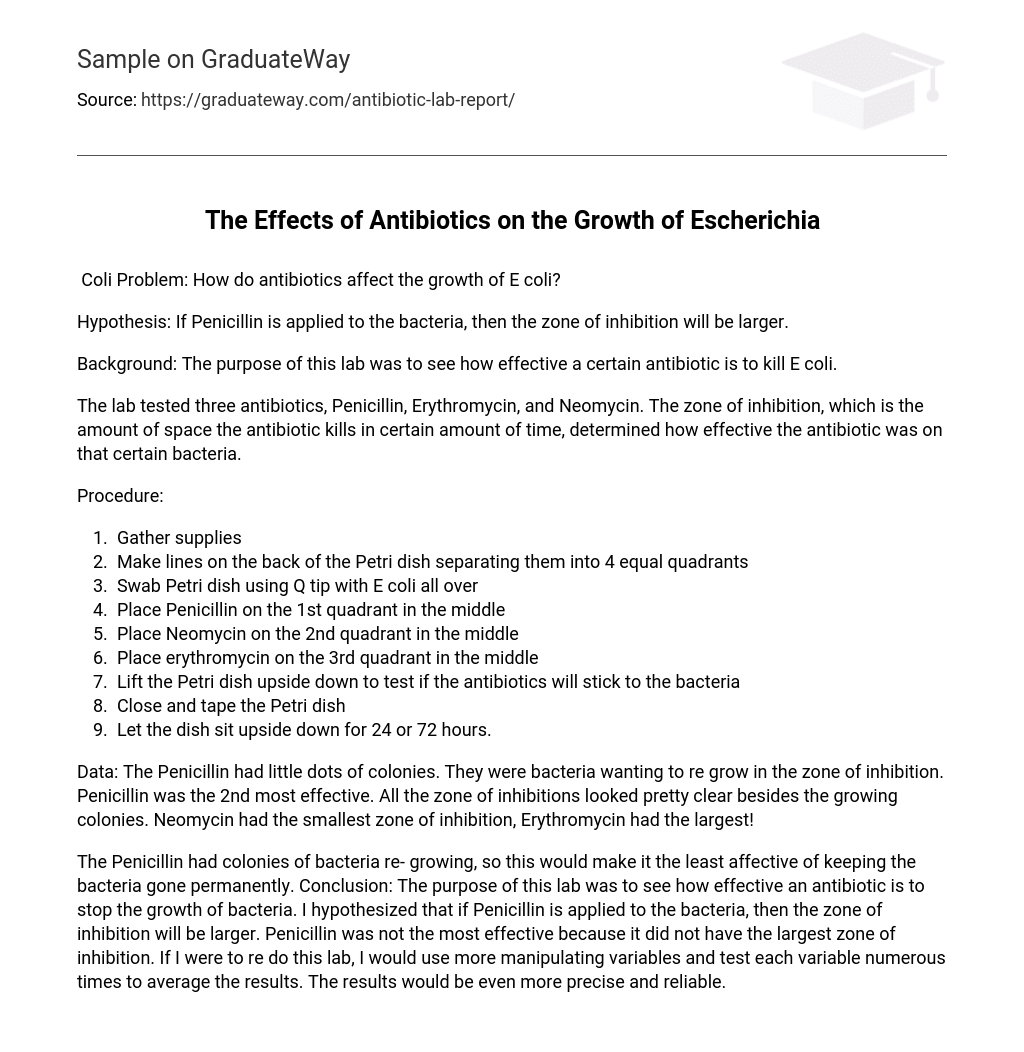Coli Problem: How do antibiotics affect the growth of E coli?
Hypothesis: If Penicillin is applied to the bacteria, then the zone of inhibition will be larger.
Background: The purpose of this lab was to see how effective a certain antibiotic is to kill E coli.
The lab tested three antibiotics, Penicillin, Erythromycin, and Neomycin. The zone of inhibition, which is the amount of space the antibiotic kills in certain amount of time, determined how effective the antibiotic was on that certain bacteria.
Procedure:
- Gather supplies
- Make lines on the back of the Petri dish separating them into 4 equal quadrants
- Swab Petri dish using Q tip with E coli all over
- Place Penicillin on the 1st quadrant in the middle
- Place Neomycin on the 2nd quadrant in the middle
- Place erythromycin on the 3rd quadrant in the middle
- Lift the Petri dish upside down to test if the antibiotics will stick to the bacteria
- Close and tape the Petri dish
- Let the dish sit upside down for 24 or 72 hours.
Data: The Penicillin had little dots of colonies. They were bacteria wanting to re grow in the zone of inhibition. Penicillin was the 2nd most effective. All the zone of inhibitions looked pretty clear besides the growing colonies. Neomycin had the smallest zone of inhibition, Erythromycin had the largest! The Penicillin had colonies of bacteria re- growing, so this would make it the least affective of keeping the bacteria gone permanently.
Conclusion: The purpose of this lab was to see how effective an antibiotic is to stop the growth of bacteria. I hypothesized that if Penicillin is applied to the bacteria, then the zone of inhibition will be larger. Penicillin was not the most effective because it did not have the largest zone of inhibition. If I were to re do this lab, I would use more manipulating variables and test each variable numerous times to average the results. The results would be even more precise and reliable.





